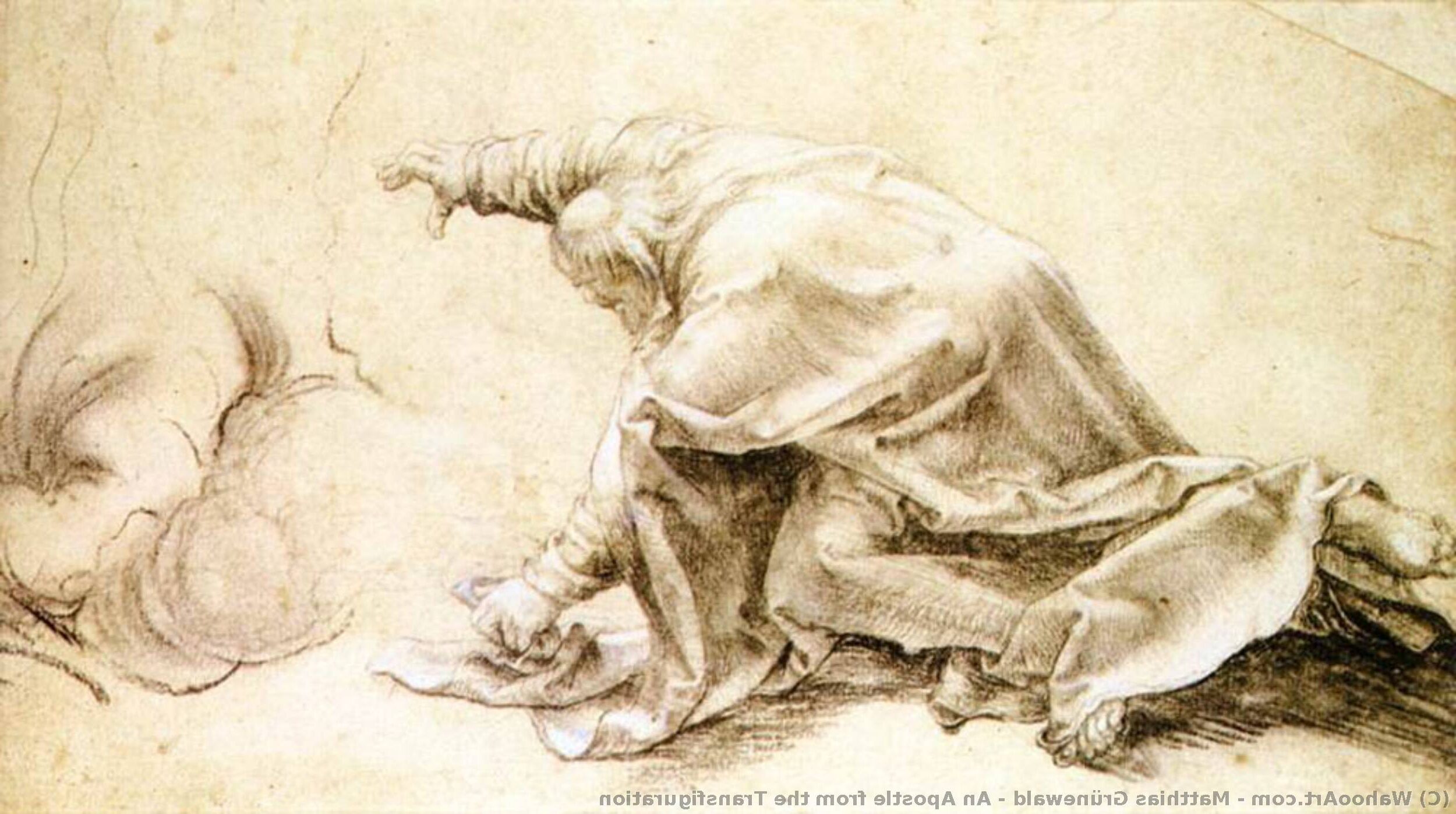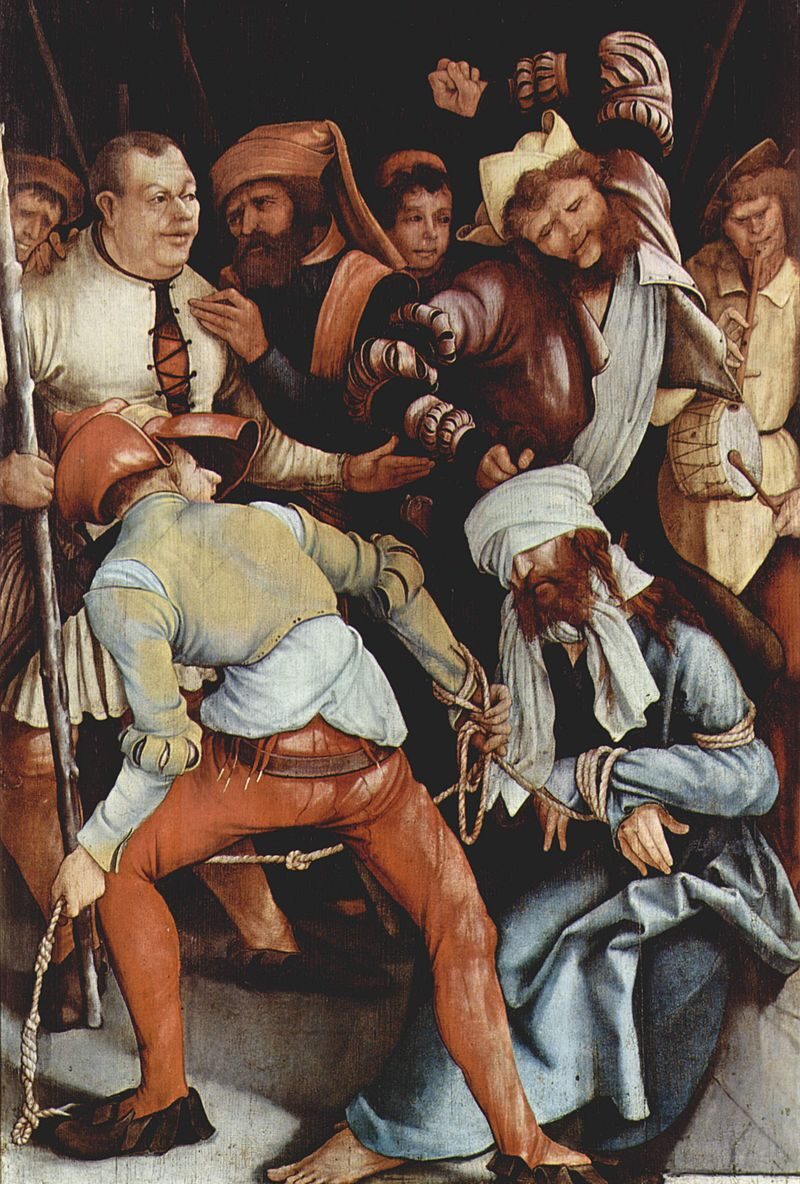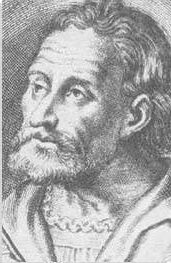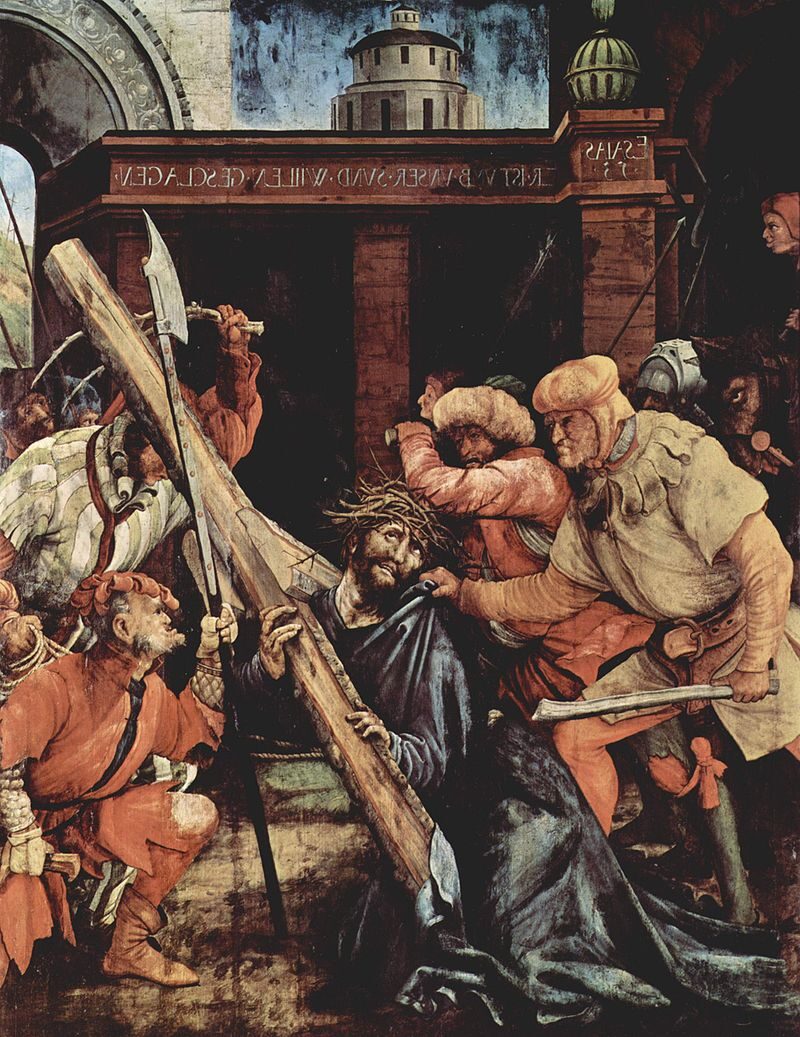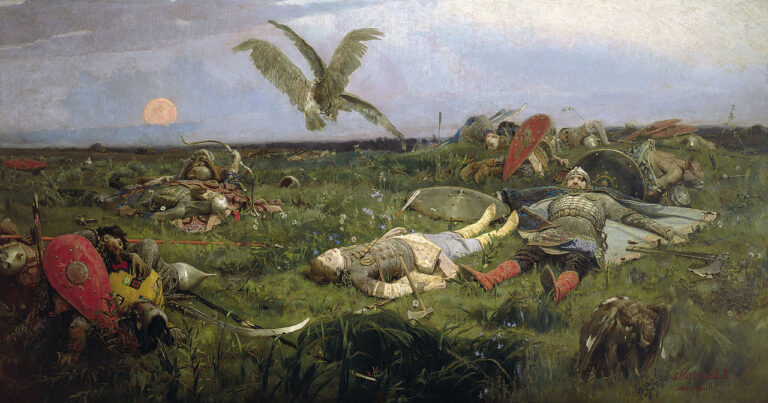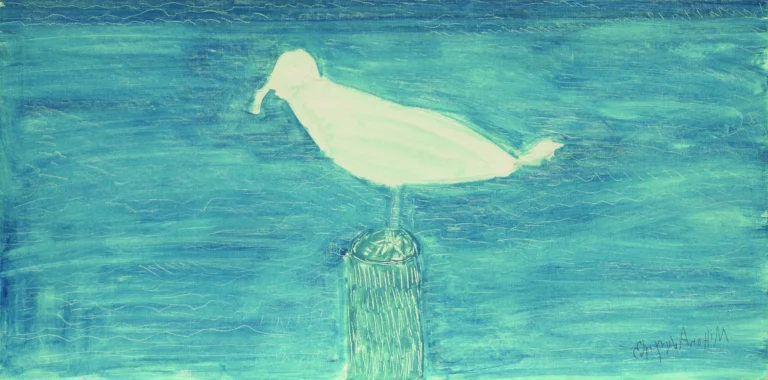Matthias Grünewald: Painter of Religious Masterpieces in Renaissance Germany
Born: 1470, Würzburg, Germany
Death: 31 August 1528, Halle (Saale), Germany
Art Movement: Renaissance
Nationality: German
Teacher: Hans Grimmer
Explore Matthias Grünewald: The Renaissance master known for his expressive religious masterpieces and visionary altarpieces in Germany.
Matthias Grünewald: Life and Works
Matthias Grünewald stands as one of Germany’s most significant Renaissance painters. He is known for his powerful religious artwork that rejected classical Renaissance styles. His distinctive approach to painting religious subjects set him apart from contemporaries like Albrecht Dürer.
Biographical Overview
Grünewald was born around 1470, though his exact birth date remains unknown. His real name was likely Mathis Grün or Mathis Gothart Nithart, with “Grünewald” being attributed to him later. He worked primarily in German-speaking regions during the late 15th and early 16th centuries.
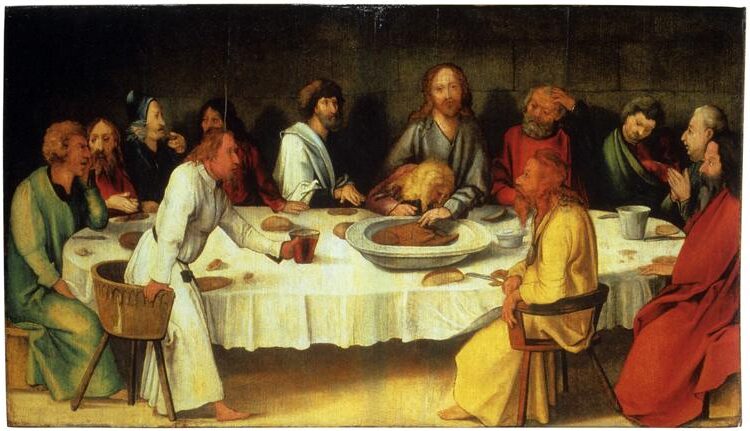
Last Supper (Coburg Panel) (c. 1500) by Matthias Grünewald
Grünewald left behind limited documentation of his life. He served as court painter to Archbishop Albrecht of Brandenburg and also worked for religious institutions throughout Germany.
His career ended with his death on August 31, 1528. Throughout his life, Grünewald remained somewhat mysterious, with fewer than 25 paintings surviving today.
Artistic Style and Influences
Grünewald deliberately ignored Renaissance classicism, instead continuing the expressive style of late medieval Central European art. His work features intense emotional content and vivid, sometimes unsettling imagery.
His masterpiece, the Isenheim Altarpiece, demonstrates his extraordinary ability to convey suffering and redemption through color and form. The piece shows Christ’s crucifixion with unflinching detail of physical torture.
His color palette was distinctive, using acid greens, vibrant reds, and stark contrasts to create dramatic spiritual tension. Grünewald’s creativity emerged through his willingness to distort figures and use symbolic elements to heighten religious messages.
Unlike contemporaries seeking mathematical perfection, Grünewald emphasized emotional impact over anatomical accuracy. His work connects to viewers through shared humanity and spiritual resonance.
Comparison with Contemporaries
While Albrecht Dürer embraced Italian Renaissance principles of proportion and perspective, Grünewald maintained a uniquely German expressionistic style. Dürer sought rational harmony; Grünewald pursued emotional and spiritual truth.
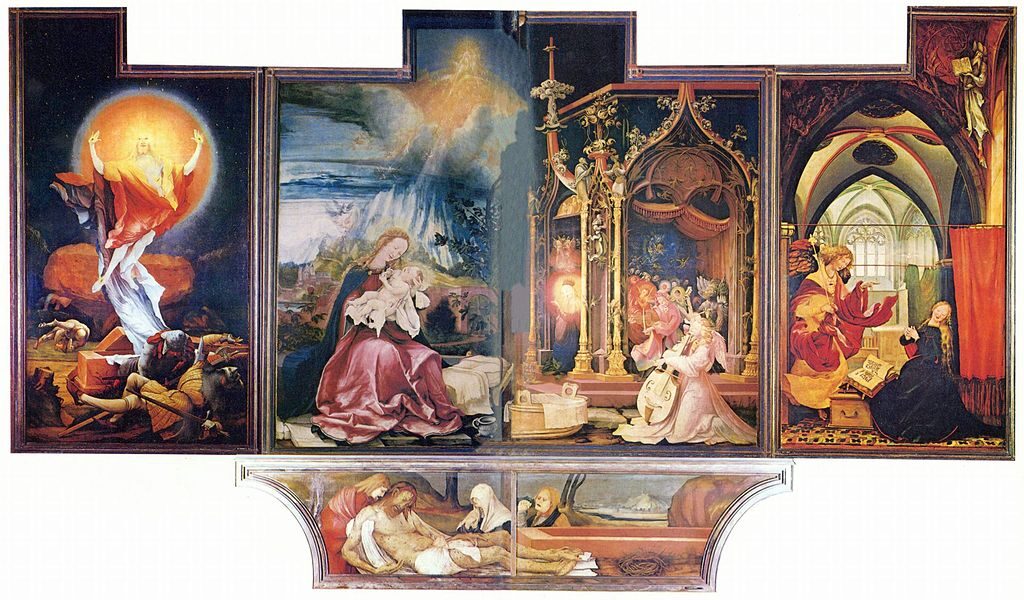
The Isenheim Altarpiece (Second State) (c. 1512) by Matthias Grünewald
Dürer gained international fame during his lifetime, while Grünewald remained less widely known despite his extraordinary talent. Their different approaches represent two vital traditions in German Renaissance art.
Compared to Italian Renaissance painters, Grünewald showed little interest in classical antiquity or idealized beauty. Instead, he focused on conveying religious meaning through emotional intensity.
His work bridges medieval religious art and the emotional directness that would later influence German Expressionism. This unique position in art history makes Grünewald a singular figure whose impact transcends his relatively small body of surviving work.
The Isenheim Altarpiece: A Masterpiece Examined
The Isenheim Altarpiece stands as one of Matthias Grünewald’s most profound artistic achievements. Created between 1512 and 1516, this multi-paneled work combines oil and tempera painting with sculpture to create a dramatic religious narrative that served both spiritual and medical purposes.
Historical Significance
The Isenheim Altarpiece was commissioned for the hospital chapel of the Monastery of St. Anthony in Isenheim, France. Patients at this hospital often suffered from ergotism, a painful disease known as “St. Anthony’s fire.”
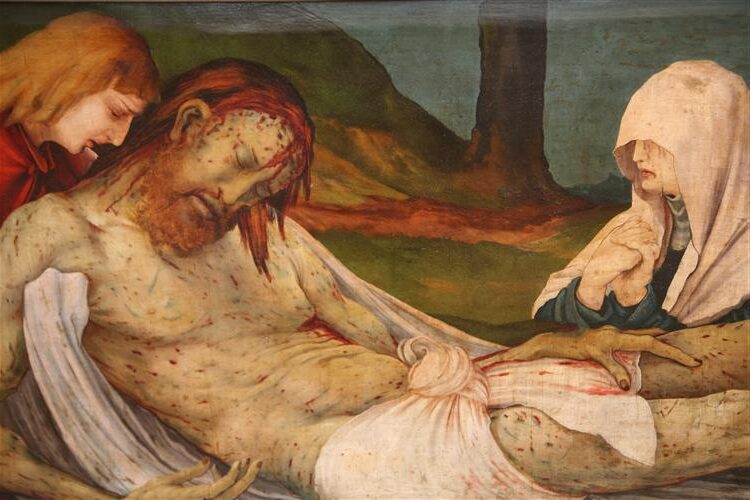
The Entombment (detail from the Isenheim Altarpiece) (c. 1512–1516)
The altarpiece was designed with movable panels that could be opened to reveal different scenes depending on religious occasions. Nikolaus of Haguenau created the sculpted portions, while Grünewald painted the panels.
Originally displayed as the central devotional object in the monastery, the altarpiece provided spiritual comfort to the suffering patients. Its powerful imagery was meant to help the afflicted identify with Christ’s pain and find hope in resurrection.
Today, the altarpiece resides in the Musée d’Unterlinden in Colmar, France, where it continues to astound visitors with its emotional intensity and artistic brilliance.
Symbolism and Iconography
The Crucifixion scene forms the most striking panel of the closed altarpiece. Grünewald depicted Christ’s body covered with sores and wounds, intentionally resembling symptoms of ergotism to create connection with hospital patients.
John the Baptist appears with the symbolic words “He must increase, but I must decrease,” pointing to the suffering Christ. Mary Magdalene kneels in anguish while the Virgin Mary, supported by John the Evangelist, swoons in grief.
When opened, the altarpiece reveals brighter scenes of the Annunciation, Nativity, and Resurrection. The Resurrection panel shows Christ rising with an otherworldly light, symbolizing spiritual triumph over suffering.
The final opening reveals sculptures of St. Anthony flanked by paintings of his temptation and his meeting with St. Paul the Hermit. These scenes emphasize spiritual victory over physical and spiritual affliction.
Technical Aspects and Conservation
Grünewald employed innovative painting techniques that distinguish the Isenheim Altarpiece from works of his contemporaries. His use of dramatic lighting creates powerful emotional effects, particularly in the Resurrection scene.
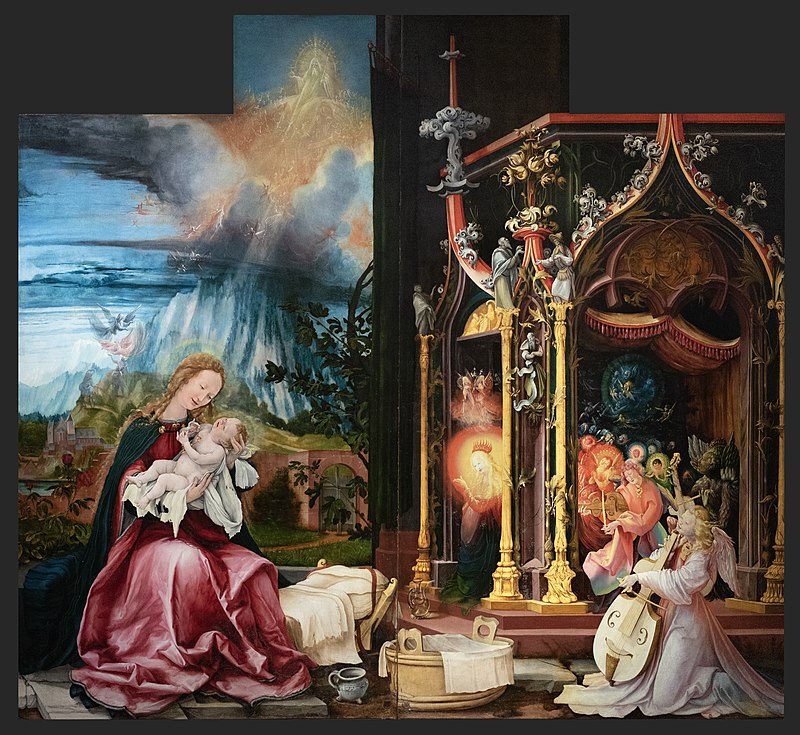
Isenheim Altarpiece – Concert of Angels (1510–1515) by Matthias Grünewald
The artist’s color choices were deliberate and symbolic. Dark, muted tones dominate the Crucifixion scene, while brilliant golds and yellows illuminate the Resurrection, creating stark visual and emotional contrasts.
Restoration efforts have carefully preserved the altarpiece’s original brilliance. During World War I, the work was moved to Munich for safekeeping, and again relocated during World War II.
Modern conservation techniques have revealed Grünewald’s detailed preparatory drawings beneath the paint layers. Recent technical analysis has also provided insights into his unique painting methods, including his layering of pigments to achieve luminous effects.
Legacy and Display
Matthias Grünewald’s artistic impact continues centuries after his death. His unique expressionist style influences artists today, while his masterpieces remain accessible in museums worldwide.
Influence on Modern Art
Grünewald’s emotional intensity and distinctive style significantly shaped modern expressionism. His vibrant use of color, dramatic lighting, and portrayal of human suffering resonated strongly with 20th-century artists seeking to convey deep emotional states. German Expressionists like Emil Nolde and Otto Dix drew direct inspiration from his work.
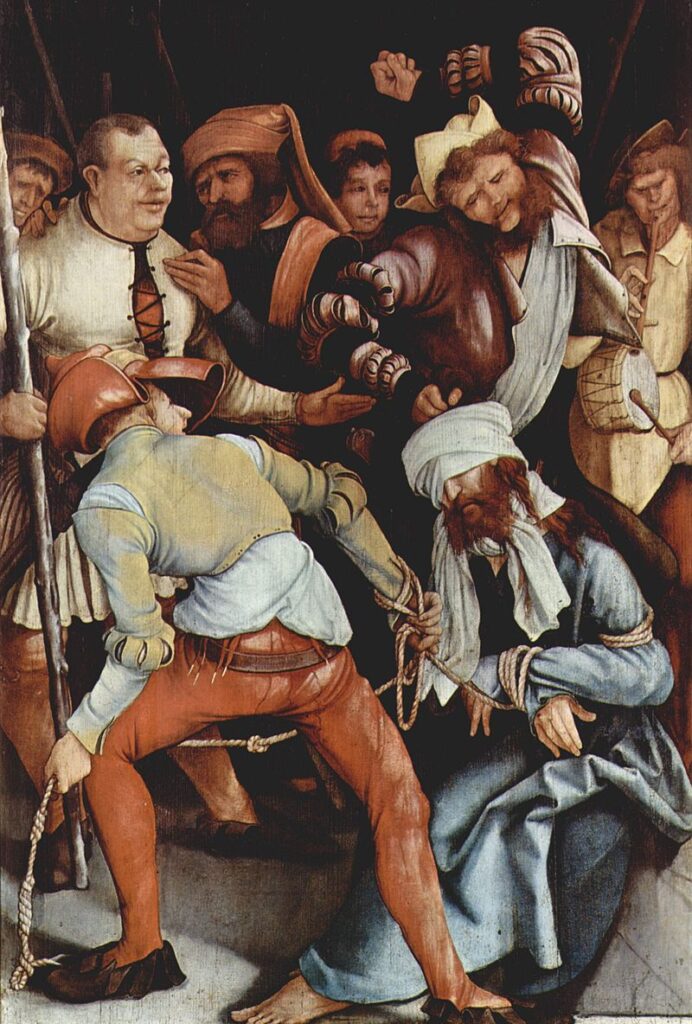
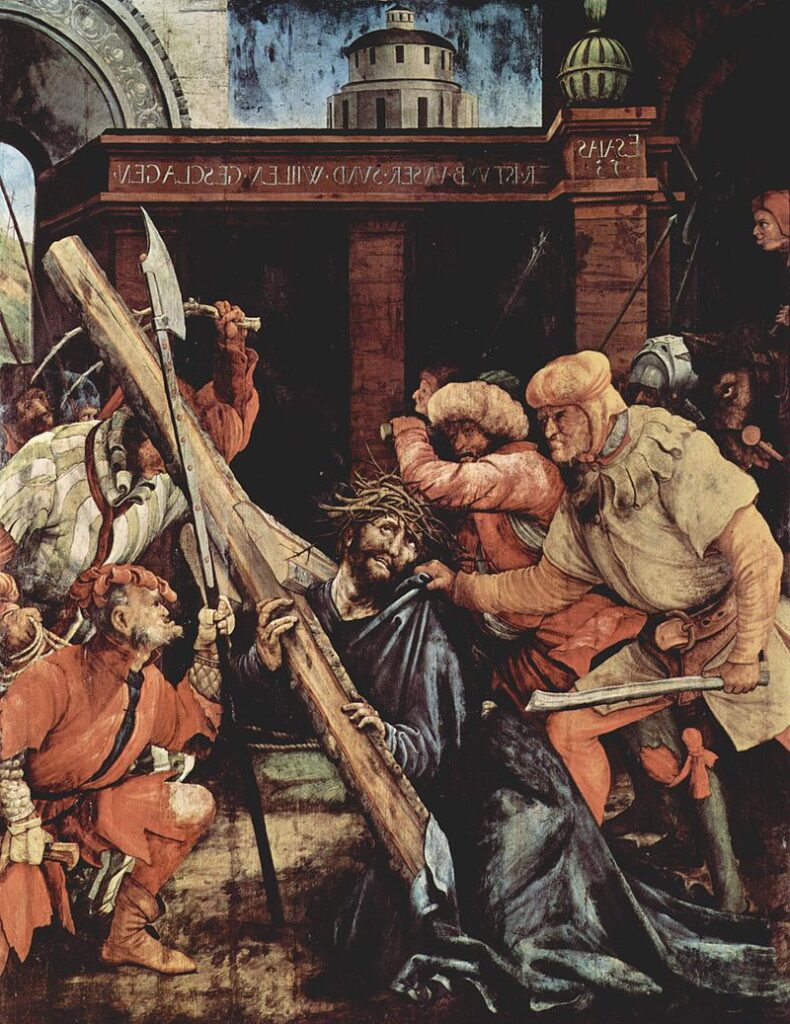
The psychological depth in Grünewald’s religious paintings provided a template for artists exploring human anguish. His distorted figures and intense expressiveness offered an alternative to Renaissance classicism. This approach influenced artists like Picasso and Bacon, who similarly manipulated form to convey emotion.
Modern religious artists still reference his Isenheim Altarpiece when depicting suffering and redemption themes. Its raw portrayal of Christ’s crucifixion remains a powerful example of art that communicates spiritual ideas through emotional impact rather than idealized beauty.
Exhibitions and Accessibility
Grünewald’s works are displayed in several prominent museums, most notably at the Unterlinden Museum in Colmar, France, where visitors can view his masterpiece, the Isenheim Altarpiece. The National Gallery of Art in Washington, DC occasionally features his work in special exhibitions at their East Building.
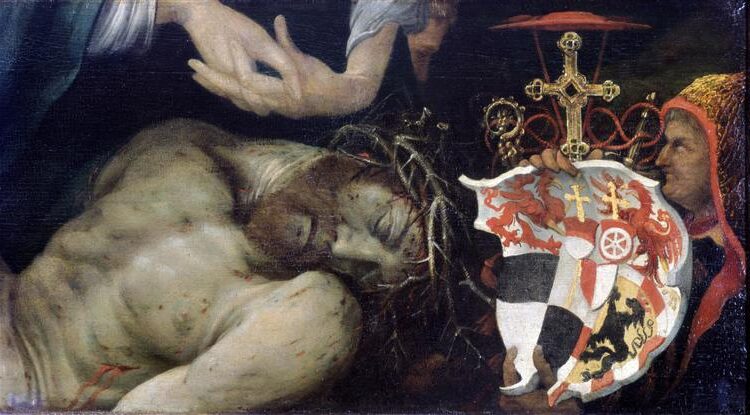
Lamentation of Christ (detail) (c. 1525) by Matthias Grünewald
The Staatliche Kunsthalle in Karlsruhe, Germany holds a significant collection of his paintings. Unlike many museums, they remain open most days except Christmas Day and New Year’s Day, making his work highly accessible to the public.
Digital initiatives have expanded access to Grünewald’s art. High-resolution images allow viewers to study details that might be missed in person. Virtual tours of the Constitution Avenue entrance at the National Gallery provide context for Northern Renaissance exhibitions featuring his work.
Many museums offer guided tours focusing on Grünewald’s technical innovations and spiritual dimensions. These educational programs help modern audiences connect with his complex religious symbolism.
Frequently Asked Questions
Matthias Grünewald’s distinctive artistic style and powerful religious imagery have generated significant interest among art historians and enthusiasts. His technical innovations, emotional expressiveness, and unique approach to religious themes set him apart in German Renaissance art.
What distinguishes the style of Matthias Grünewald from his contemporaries?
Grünewald’s style stands out for its intense emotional expressiveness and dramatic use of color. Unlike many Renaissance artists who emphasized classical harmony and proportion, Grünewald focused on conveying spiritual suffering and religious fervor.
His figures often appear contorted and elongated, with exaggerated features that communicate extreme emotional states. This expressionistic approach differs markedly from the more measured styles of contemporaries like Albrecht Dürer.
Grünewald’s distinctive use of light and shadow creates stark contrasts that heighten the dramatic impact of his religious scenes. His work shows less interest in anatomical perfection and more concern with spiritual truth and emotional resonance.
Can you explain the significance of the Isenheim Altarpiece in the body of Grünewald’s work?
The Isenheim Altarpiece represents Grünewald’s masterpiece and one of the most powerful religious paintings in Western art. Created between 1512 and 1516, this multi-paneled altarpiece was commissioned for a hospital that specialized in treating skin diseases.
The central Crucifixion panel depicts Christ’s body covered with sores similar to those suffered by patients at the hospital, creating a direct connection between Christ’s suffering and the viewers’ own pain. This empathetic approach made the work particularly meaningful to its original audience.
The altarpiece’s ingenious construction allowed for different configurations to be displayed throughout the liturgical year. Each panel reveals Grünewald’s mastery of color, emotional intensity, and religious symbolism.
What techniques and materials did Matthias Grünewald commonly use in his paintings?
Grünewald primarily worked with tempera and oil on wood panels, skillfully blending these mediums to achieve his distinctive effects. His technical approach emphasized layered glazes that created luminous, jewel-like colors.
He developed innovative techniques for depicting light, particularly supernatural or divine illumination. In scenes like the Resurrection panel of the Isenheim Altarpiece, Grünewald created an otherworldly radiance through careful application of pigments.
His brushwork varied from precise detail in faces and hands to broader, more expressive strokes in backgrounds and drapery. This technical versatility allowed him to direct viewers’ attention and emotional responses.
Which notable themes are recurrent in the artworks of Matthias Grünewald?
Religious suffering dominates Grünewald’s work, particularly Christ’s Passion and the trials of Christian saints and martyrs. He depicted these subjects with unflinching intensity, emphasizing physical torment as a path to spiritual transcendence.
Transformation and spiritual redemption appear frequently, often shown through dramatic contrasts between darkness and light. His resurrection scenes feature radiant, transfigured bodies emerging from darkness into divine light.
Supernatural visions and mystical experiences form another recurring theme. Grünewald’s saints often encounter divine or demonic presences in ways that blur the boundary between physical and spiritual realms.
How does the Crucifixion scene in Grünewald’s Isenheim Altarpiece deviate from traditional representations?
Grünewald’s Crucifixion is shockingly realistic in its depiction of physical suffering. Christ’s body appears ravaged—covered with wounds, twisted in agony, and bearing a greenish pallor suggesting advanced decomposition.
The traditional halo is replaced by a more complex background of oppressive darkness, making Christ’s suffering appear more isolated and intense. This stark presentation contrasts sharply with more idealized Renaissance depictions.
The scale of the figures breaks with tradition, with Christ’s body unnaturally elongated and the supporting figures appearing proportionally smaller. This hierarchy of scale emphasizes Christ’s central importance while creating a disorienting emotional effect.
What influence did Matthias Grünewald have on the art world after his time?
Grünewald’s work fell into relative obscurity until the late 19th and early 20th centuries. Expressionist artists rediscovered his emotional intensity. Painters like Max Beckmann and Otto Dix found inspiration in his willingness to distort forms for emotional effect.
His unflinching depictions of suffering resonated particularly with artists responding to the horrors of World War I. Many saw parallels between Grünewald’s tortured Christ and the physical and psychological trauma of modern warfare.
The Isenheim Altarpiece specifically influenced numerous modern artists’ approaches to religious themes. Its combination of grotesque suffering and transcendent hope provided a visual vocabulary for addressing contemporary human experience.

